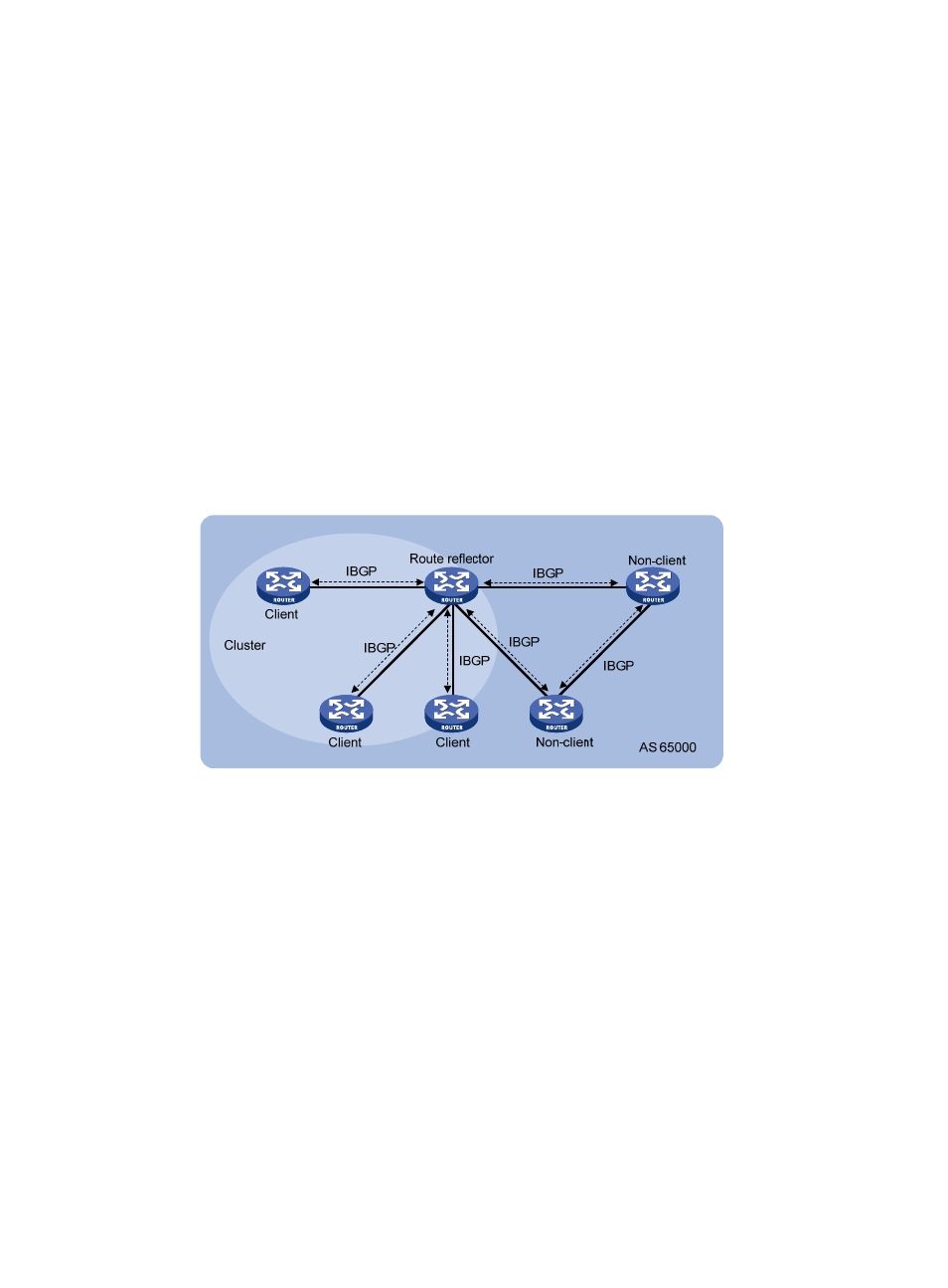H3C Technologies H3C S12500 Series Switches User Manual
Page 216

200
When a peer joins the peer group, the peer obtains the same configuration as the peer group. If
the configuration of the peer group is changed, the configuration of group members is changed.
•
Community
When you define a routing policy, to facilitate configuration and maintenance, you can use the
community list and extended community list as filters, instead of IP prefix list, ACL, or AS_PATH.
For more information, see "
•
Route reflector
IBGP peers must be fully meshed to maintain connectivity. If n routers exist in an AS, the number of
IBGP connections is n(n-1)/2. If a large number of IBGP peers exist, large amounts of network and
CPU resources are consumed.
Using route reflectors can solve this issue. In an AS, a router acts as a route reflector, and other
routers act as clients connecting to the route reflector. The route reflector forwards the routing
information received from a client to other clients. In this way, all clients can receive routing
information from one another without establishing BGP sessions.
A router that is neither a route reflector nor a client is a non-client, which, as shown in
must establish BGP sessions to the route reflector and other non-clients.
Figure 79 Network diagram for a route reflector
The route reflector and clients form a cluster. Typically a cluster has one route reflector. The ID of
the route reflector is the Cluster_ID. You can configure more than one route reflector in a cluster to
improve network reliability and prevent a single point of failure, as shown in
. The
configured route reflectors must have the same Cluster_ID in order to avoid routing loops.